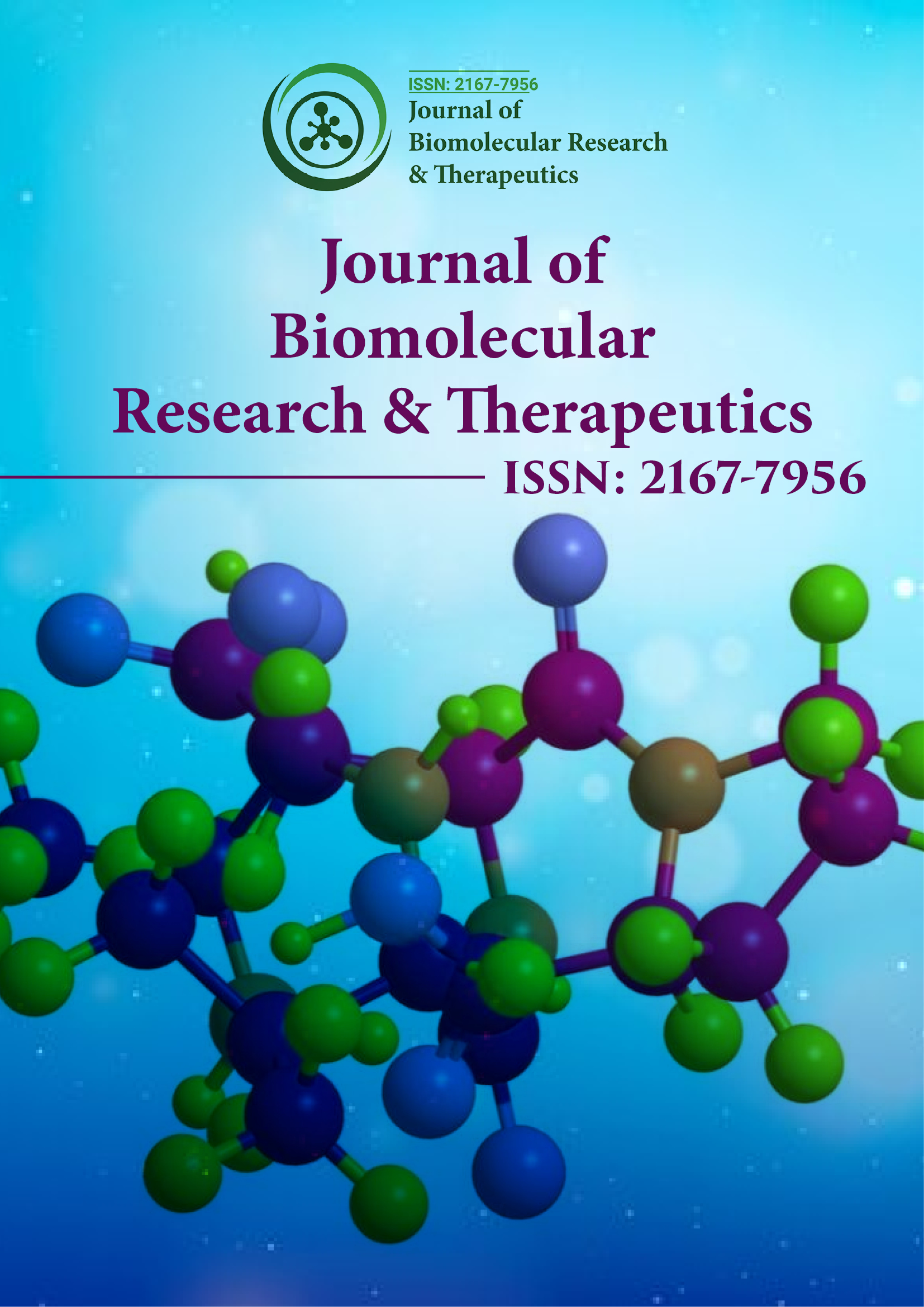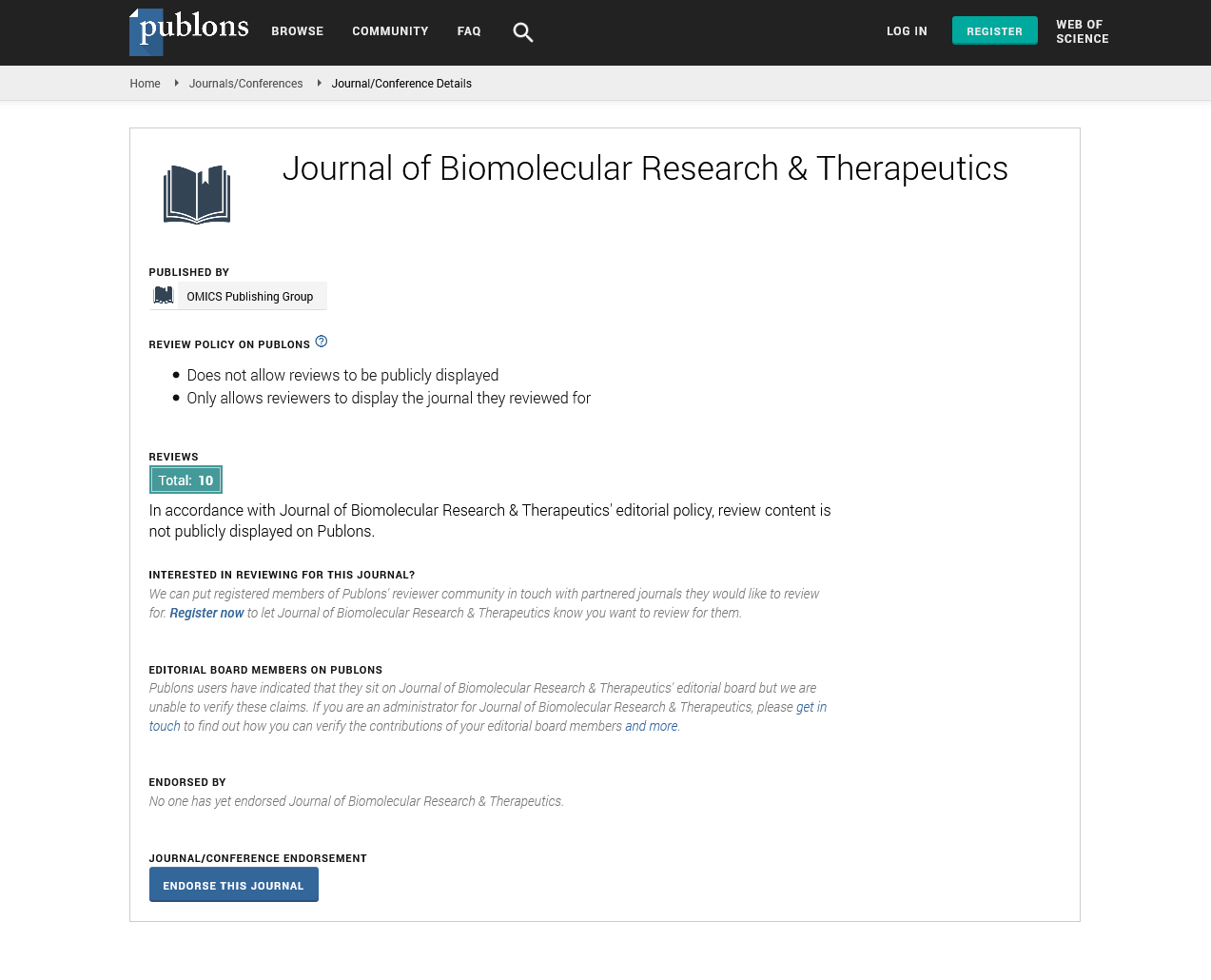Indexed In
- Open J Gate
- Genamics JournalSeek
- ResearchBible
- Electronic Journals Library
- RefSeek
- Hamdard University
- EBSCO A-Z
- OCLC- WorldCat
- SWB online catalog
- Virtual Library of Biology (vifabio)
- Publons
- Euro Pub
- Google Scholar
Useful Links
Share This Page
Journal Flyer

Open Access Journals
- Agri and Aquaculture
- Biochemistry
- Bioinformatics & Systems Biology
- Business & Management
- Chemistry
- Clinical Sciences
- Engineering
- Food & Nutrition
- General Science
- Genetics & Molecular Biology
- Immunology & Microbiology
- Medical Sciences
- Neuroscience & Psychology
- Nursing & Health Care
- Pharmaceutical Sciences
Commentary - (2024) Volume 13, Issue 1
Liquid-Liquid Phase Separation: A New Frontier in Understanding Cancer Biology
Denoel Kallory*Received: 29-Jan-2024, Manuscript No. BOM-24-25388; Editor assigned: 31-Jan-2024, Pre QC No. BOM-24-25388 (PQ); Reviewed: 14-Feb-2024, QC No. BOM-24-25388; Revised: 21-Feb-2024, Manuscript No. BOM-24-25388 (R); Published: 28-Feb-2024, DOI: 10.35248/2167-7956.23.13.364
Description
In the complex mosaic of cancer research, scientists are constantly find novel mechanisms underlying the development and progression of this complex disease. Among these emerging change of opinion is biomolecular condensation, a phenomenon that has achieved significant attention in recent years. This complex process, once overlooked, is now recognized as a vital player in the balance of cellular functions and dysfunctions, particularly in the context of cancer. In this commentary, we explore the developing field of biomolecular condensation, its implications for cancer research, and the potential it holds for therapeutic interventions.
Understanding biomolecular condensation
Biomolecular condensation refers to the formation of membraneless organelles or cellular compartments through the reversible assembly of biomolecules, such as proteins and nucleic acids, driven by Liquid-Liquid Phase Separation (LLPS). This dynamic process allows cells to spatially organize their components, facilitating various cellular activities, including signaling, transcription, and protein synthesis. In recent years, researchers have exposed the central role of biomolecular condensates in cellular homeostasis and disease pathogenesis, including cancer.
The role of biomolecular condensates in cancer
In cancer cells, dysregulated biomolecular condensation can lead to difficult assembly of condensates, checking cellular processes and promoting tumorigenesis. For example, several studies have implicated the formation of condensates in the regulation of oncogenic signaling pathways. Condensates can serve as systems for the concentration and activation of signaling molecules, increasing downstream signaling events associated with cell proliferation, survival, and metastasis.
Moreover, biomolecular condensation has been linked to the dysregulation of gene expression programs in cancer. Condensates formed by transcription factors, RNA, and associated proteins play essential roles in the spatial organization of the transcriptional machinery. Dysfunctional condensates can lead to altered gene expression profiles, contributing to the malignant phenotype of cancer cells.
Additionally, emerging evidence suggests that biomolecular condensation may contribute to the formation of specialized structures within cancer cells, such as stress granules and Pbodies, which regulate mRNA metabolism and protein translation in response to cellular stress. Dysregulation of these dynamic structures has been implicated in cancer progression and resistance to therapy.
Implications for cancer therapy
The understanding of biomolecular condensation in cancer has opened new drives for therapeutic interventions. Targeting the formation or function of condensates associated with oncogenic signaling pathways represents a potential strategy for cancer treatment. By stopping the assembly of condensates or modulating their activity, researchers aim to block fundamental signaling events driving tumorigenesis, thereby inhibiting cancer cell proliferation and survival.
Furthermore, biomolecular condensates could serve as novel targets for the development of precision medicines customized to specific cancer subtypes or molecular profiles. By identifying critical components of aberrant condensates in cancer cells, researchers can design therapeutic agents that selectively break oncogenic condensates while sparing normal cellular processes.
Moreover, the dynamic nature of biomolecular condensation presents opportunities for therapeutic interventions aimed at restoring cellular homeostasis in cancer cells. Modulators of LLPS, such as small molecules or peptides, hold potential for regulating the formation and dissolution of aberrant condensates, thereby restoring normal cellular functions and briefing cancer cells to existing therapies.
Challenges and future directions
Despite the exciting potential of targeting biomolecular condensation in cancer therapy, several challenges remain. One major hurdle is the identification of specific condensates and their associated components that drive cancer progression. Explaining the molecular mechanisms underlying the assembly and function of these condensates will be essential for developing effective therapeutic strategies.
Moreover, the dynamic nature of biomolecular condensation places challenges for drug development, as targeting these processes requires precise modulation without disrupting essential cellular functions. Designing selective modulators of LLPS that can penetrate cells and exert therapeutic effects remains a difficult task.
Furthermore, understanding the exchange between biomolecular condensation and other signs of cancer, such as genomic instability and immune evasion, will be essential for comprehensive cancer treatment strategies. Integrating knowledge from different fields, including cell biology, biophysics, and immunology, will be critical for advancing our understanding of the role of condensates in cancer biology.
In conclusion, biomolecular condensation represents a new phase in cancer research, offering insights into the complex exchange between cellular organization and disease pathogenesis. By resolving the mechanisms underlying aberrant condensate formation in cancer cells, researchers are preparing for innovative therapeutic approaches that target these dynamic structures. While challenges remain, the potential of precision medicines customized to stop oncogenic condensates holds great potential for improving outcomes in cancer patients.
Citation: Kallory D (2024) Liquid-Liquid Phase Separation: A New Frontier in Understanding Cancer Biology. J Biol Res Ther. 13:364.
Copyright: © 2024 Kallory D. This is an open access article distributed under the terms of the Creative Commons Attribution License, which permits unrestricted use, distribution, and reproduction in any medium, provided the original author and source are credited.

